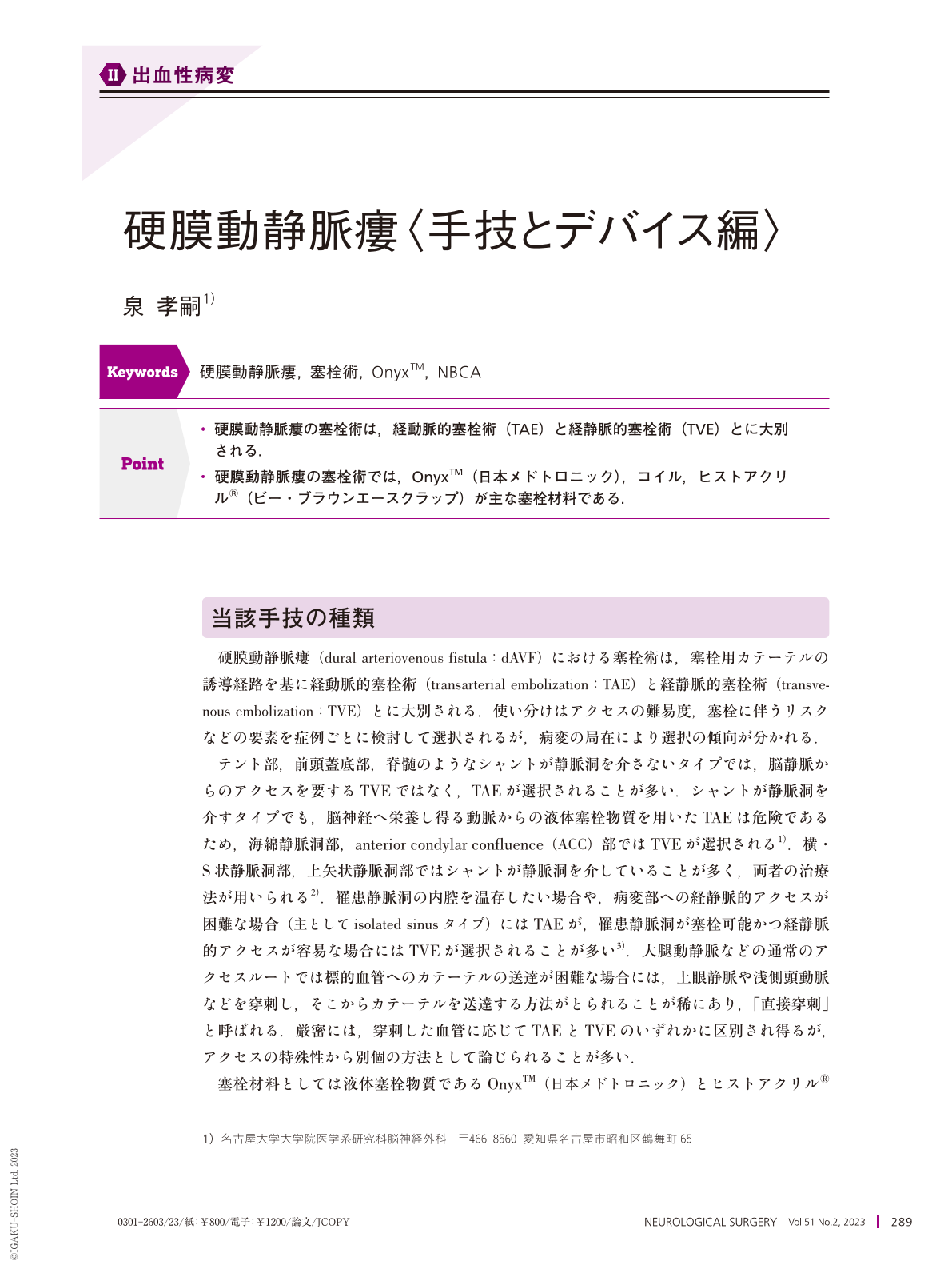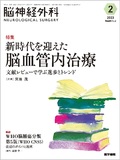Japanese
English
- 有料閲覧
- Abstract 文献概要
- 1ページ目 Look Inside
- 参考文献 Reference
Point
・硬膜動静脈瘻の塞栓術は,経動脈的塞栓術(TAE)と経静脈的塞栓術(TVE)とに大別される.
・硬膜動静脈瘻の塞栓術では,OnyxTM(日本メドトロニック),コイル,ヒストアクリル®(ビー・ブラウンエースクラップ)が主な塞栓材料である.
The treatment modalities for dural arteriovenous fistulas(dAVFs)involve transarterial embolization(TAE)and transvenous embolization(TVE). TAE is the treatment of choice for non-sinus-type dAVF but is also often used in cases with sinus-type dAVF and isolated-sinus type with difficult transvenous access. On the other hand, TVE is the treatment of choice for the cavernous sinus and anterior condylar confluence, which are prone to cranial nerve palsy due to ischemia caused by transarterial infusion.
Embolic materials available in Japan include liquid Onyx, nBCA, as well as coil and Embosphere microspheres. Onyx has excellent curability and is frequently used. However, nBCA is used in the spinal dAVF because the safety of Onyx has not been established. Despite being costly and time-consuming, coils are primarily used in TVE. They are sometimes used in combination with liquid embolic agents. Embospheres are used to reduce the blood flow; however, they are less curative and do not offer permanent resolution.
If AI technology can help diagnose complex vascular structures, it may be possible to implement highly effective and safe treatment strategies.

Copyright © 2023, Igaku-Shoin Ltd. All rights reserved.


